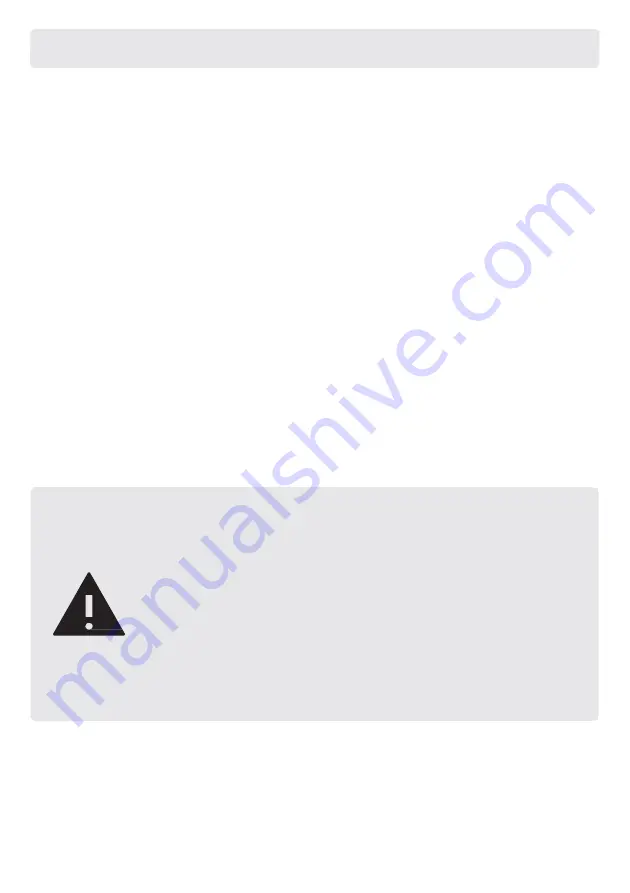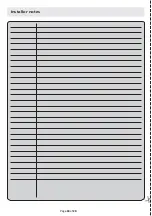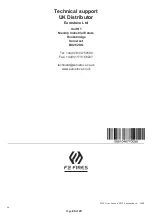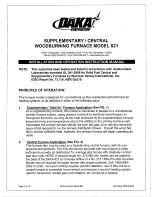
Page
15
of
20
Thermometers are available that a�ach to the flue pipe directly above the appliance and aid in running the
appliance at the correct temperature. Your installation engineer should advise you of the correct se�ings after
installation and testing is complete, by using this test procedure.
150°C-300°C
Perfect. The flue gases should be within this temperature range for the safest and most efficient operation of
your appliance.
Below 150°C
Too low. This will cause the condensation of wood gases and the buildup of tar in the chimney. It can also dirty
the glass with excess soot and results in the inefficient burning of fuel.
Above 300°C
Too hot. Heat will be wasted up the chimney. Excess heat may damage the appliance over time or ignite the
existing accumulation of tar, which can result in a chimney fire (See
Warning
below).
Overhea�ng
Should the appliance be allowed to get too hot and overheat, you should close the Primary and Secondary
air controls fully, using the glove provided. Keep the fire door closed and allow the fire to burn down and the
temperature to drop before allowing air back in gradually (See
Above 300°C
above).
Chimney Fire
In the event of a chimney fire, always
dial 999
and ask for the
Fire Service
. If safe to do so, fully close all air controls and keep
the appliance door closed. Move any combustibles away from the
appliance and chimney. Check any other rooms that the chimney
passes through and move any combus�bles away from the
chimney breast. Before using the appliance again after a chimney
fire, the chimney should be thoroughly cleaned and inspected by
a qualified person to ensure further damage has not occurred.
Running temperature






































